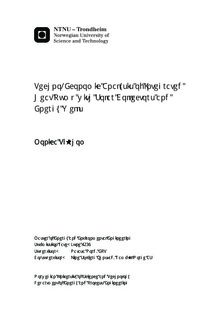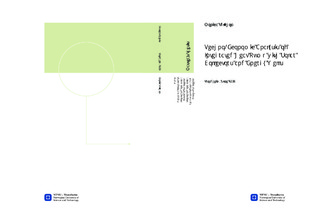| dc.description.abstract | The European Union appointed in 2007 an objective to reduce the energy consumption with 20 % and increase the utilization of renewable energy resources with 20 % within year 2020. This master thesis analysed a passive house kindergarten in Trondheim built in 2013 with a heat supply system based on renewable heat sources, solar collectors combined with a ground source heat pump. The possibility of storing solar heat seasonally in energy wells was also taken into consideration. The kindergarten was modelled in the simulation program IDA ICE, in order to perform simulations and analyse the building s heat supply system. The model was initiated through the author s preliminary project thesis. As the aim was to make the model as realistic as possible, all documentation used as basis for the input data was received from Rambøll, who did the projecting of the heat supply system. Issues particularly of interest were the resulting net annual energy need of the building, heating loads and the performance of the heat plant. Indoor environment in the occupied zones and ventilation control strategies were also examined. Parameters regarding system design and operation were changed in order to study how this affected the results. At last, an economic evaluation of the heat supply system was carried out too see whether the heat supply system was economically preferable.The net annual energy need according to IDA ICE was 57,4 kWh/m2, in which the heating need was 33,1 kWh/m2. Judging by IDA ICE results, the installed radiators at Haukåsen kindergarten have oversized capacity, while the heating coil and domestic hot water load was dimensioned with too low heating load. Out of the net annual heating need, the results showed that the heat pump covered 81,5 %, the boiler 12,5 % and the solar collector 6 %. As the heat pump coverage was found to be only 24 % of the heating load, the high coverage of the net annual heating need indicated an oversized capacity in the heat pump. This may cause earlier wear out of the compressor due to part-load operation most of the time.The results related to analysis of the solar collector showed that the solar collector contribution was 1 608 kWh/year, but the theoretical efficiency implied that a contribution of 4 241 kWh/year could be expected. Either doubling of the collector area or optimization of the tilting angle gave noticeably higher contribution. Neither did changing of the shape factor for the hot water tank. Thus the default control strategy of the solar collector circuit in IDA ICE was questioned, and ought to be further studied.As the zones in the kindergarten have demand controlled ventilation based on temperature, presence and CO2 concentration, different ventilation control macros were developed and implemented in the IDA ICE model. This resulted in more energy efficient ventilation and 1 388 kWh was saved each year due to decreased energy need for fan operation. Realization of night set-back contributed to decrease the net annual heating need with 5 969 kWh/year. Nevertheless, the low annual energy need was at the sacrifice of the indoor environment. The night set-back implied too low zone air temperatures during wintertime, while the occupancy controlled ventilation led to excess temperature during summertime. Simulation of underground thermal energy storage was carried out by changing the IDA ICE plant macro. A ground heat exchanger ensured transfer of heat from the solar collector circuit to the brine return pipeline. The result showed a 78 % increase in annual solar heat contribution and 0,08 °C increase in ground temperature over a year. This indicated that the heat pump COP would remain high for a longer time period than in the model without the ground heat exchanger. To confirm this, further studies on the subject should involve simulations over longer time periods.The economic analysis showed that the existing heat plant in the kindergarten has a global cost of 452 892 NOK and a pay-off period of 25 years. If the solar collector had not been installed, 25 667 NOK could have been saved in global cost and 1,3 years in pay-off period. Nevertheless, installation of solar collectors was a deciding factor when the building received the label Very good according to the building classification system BREEAM. On this basis the solar collector was considered a valuable investment. Sensitivity analysis showed that an increase in real interest rate gave lower global costs and a higher pay-off period. | nb_NO |

